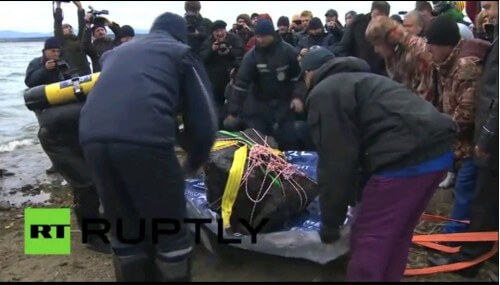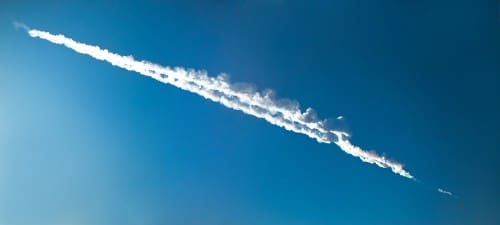The asteroid, known as 2013 TV135, was discovered in the Giraffe group by astronomers from the Crimean Astrophysical Observatory in southern Ukraine and confirmed by the World Astronomical Organization's Minor Planet Center.

Ukrainian astronomers discovered an asteroid with a diameter of 410 meters that could hit the Earth in 2032 with a probability of 1 in 63 thousand. If it does hit, it is 50 times more powerful than the largest atomic bomb. Astronomers say the asteroid will be 1.7 million kilometers from Earth on August 26, 2032.
The asteroid, known as 2013 TV135, was discovered in the Giraffe group by astronomers from the Crimean Astrophysical Observatory in southern Ukraine and confirmed by the World Astronomical Organization's Minor Planet Center.
"On the night of October 12, I observed the Giraffe group as part of an in-depth study of the search for comets," Gendi Borisov of the Crimean Astrophysical Observatory told the Itra-Tass news agency. "The first observations showed that it is moving quickly and is relatively close."
The discovery was confirmed by astronomers in Italy, Spain, Great Britain and Russia. The asteroid was added to the list of asteroids that pose a risk to Earth, which includes bodies orbiting at a distance of less than 7.5 million kilometers from Earth's orbit.
Related articles:
- prevent the next Chelyabinsk
- The shock wave of the meteor that hit Russia circled the Earth three times in two days
- 200 thousand square meters of glass were broken in the city of Chelyabinsk in Russia

A meteorite weighing half a ton was found in Lake Cherbakol near Chelyabinsk
And in the meantime, a meteorite weighing 570 kilograms and about a meter in diameter was detached from Lake Cherbakol about 70 kilometers west of the city of Chelyabinsk, many of whose houses were damaged by the impact wave when the large meteorite, which is one of its remnants, hit in February 2013.
The lake is very dark, which is why it took so long to find the meteorite. Also, the water was frozen when the meteorite hit the lake, and it was necessary to clean up a lot of mud that had accumulated around the meteorite.
Bill Plate, owner of the blog "bad astronomy" says that the diameter of the original meteor is estimated at about 17 meters but it exploded when it passed through the atmosphere at supersonic speed. The event was also made famous by the fact that it was recorded from many angles, mainly from video cameras mounted on top of cars. It was even photographed by a satellite who explores the earth.
The explosion occurred at an altitude of about 50 kilometers and is estimated at hundreds of thousands of tons of TNT that caused windows to explode and injured over a thousand people.
According to Pleit, a shower of fragments has fallen across the Russian steppe, but so far the largest piece extracted weighed 11 kilograms. It could be held with both hands. The piece discovered this week is several orders of magnitude larger.
A preliminary examination of the rock showed that it originated from outside the earth, so it is likely that it is one of the fragments of the meteorite from February. It also looks like a meteorite - a black mantle on the outside, and is indented with grooves caused by molten material that erupted when the rock flew through the air. Further testing is still needed.
The place where they were looking for the meteorite was the area in the lake where a hole was opened in the ice that covered the lake, which indicated great chances of the rock being hit.

5 תגובות
It's not good, Bruce Willis won't be at his best in those years.
The event also unfolded//to hold her with both hands.-typos. and thank you for your good writing
Because even if it hits, it will do a little more damage than the asteroid that hit Russia in February.
Is there really a chance that this asteroid will destroy the earth?